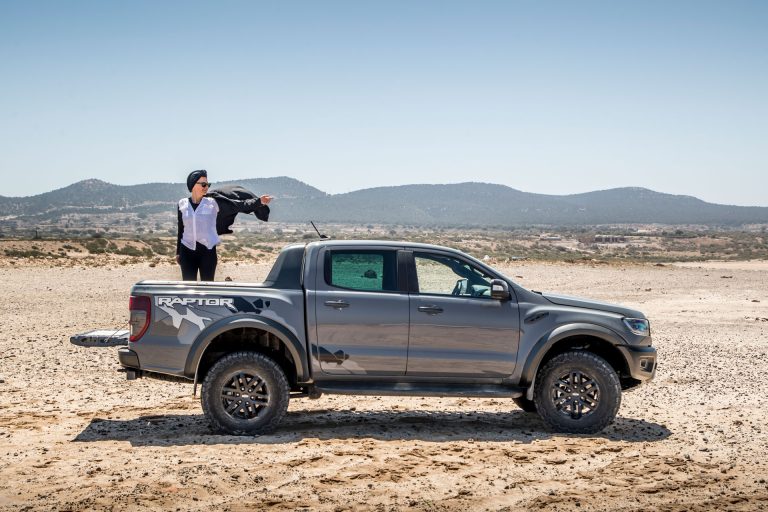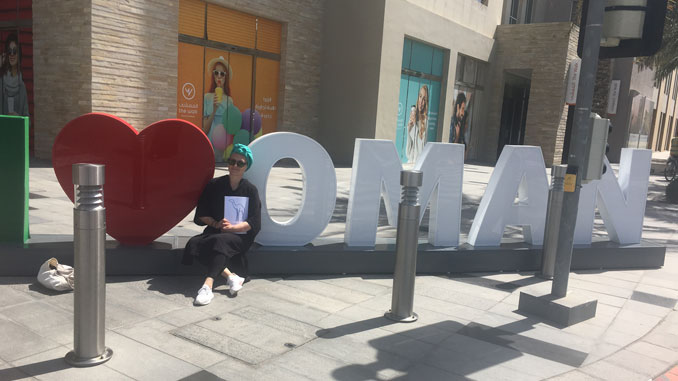Things to know about Muslim prayer

Visiting one of the local religious institutions while on vacation is almost standard for tourists these days. In some countries, the locals will also have become accustomed to the sight of various foreigners inside their sanatoriums. Nevertheless, as an outsider, you should always behave respectfully so as not to cause problems for the local believers. In this FAQ, I explain to you how to do just that in Oman!
Beside this article I have also interesting information about the general Arabic etiquette and recommendations for your clothes in Oman for you!
Faith in Oman – the most important information about prayer in Islam
To get a comprehensive picture of the sacred code on prayer in Islam, it is important to understand the complexity of the faith. Faith is not just a call from Allah or an intercession, but manifests itself as a comprehensive approach to life. The Great Sultan Qaboos Mosque in Muscat and its little sister in Salalah, which bears the same name, are the only places of worship in Oman that you are allowed to enter as a non-Muslim.
Special opening hours have been set up for tourists, outside the prayer times of the local faithful. Thus, unfortunately, you do not get to enjoy authentic prayer in Islam. However, in order to give you a genuine impression, here are the most important aspects of the Muslim prayer process in Omani mosques.
Read here how I experienced Ramadan!
Stylish to the Islamic prayer – modesty is a virtue
For Muslims, a well-groomed appearance is a top priority. Clothing covers almost the entire body for men and women alike. The fact that you often meet believers dressed in white in Oman is no coincidence. Cleanliness is one of the most important basic principles for the locals. While women keep their shoulders and décolleté covered and cover their hair with headscarves, men wear a prayer cap – the so-called takke, which goes back to the Prophet Mohammed and his Sunna. It serves to honor Allah, embodies protection and purity.
With ritual purity access to the prayer hall – ablution for faith.
Wudhu is the name of the ritual ablution performed by the faithful with pure water before entering the prayer hall. The consciousness for ablution is called Nijja and with the Basmala there is an exclamation in advance in the name of the merciful, gracious God. The ritual includes washing hands and wrists three times, rinsing the mouth just as often, and inhaling water into the nose followed by blowing it out. This is followed by three times the face with forehead and the chin, and first the right and then the left forearm – from the elbow to the wrist.
Then wet the hair and ears with moistened hands. The ritual conclusion is the triple washing of the right foot and ankle and parallel the left side. With a short prayer the washing ceremony can be finally finished. Since the floor of the prayer hall can be touched with the forehead during prayer, shoes must be removed before entering the mosque. According to the Islamic faith, the prayer room is entered with the right foot.
“Erweitere deinen Knigge”
Die passende Kleidung zeigt den Einheimischen, dass Du sie respektierst. Ein wenig Kauderwelsch oder Smalltalk öffnet dir manche Türen oder zumindest Herzen.
Als kleine Hilfe empfehle ich Dir den “Reise Know-How Sprachführer Omanisch-Arabisch*”
Muslim faith in Omani mosques – Interesting facts about prayer in Islam
Men pray separately from women. The immediate connection between the believer and Allah must not be interrupted by another living being during the prayer in order for the prayer to remain valid. Therefore, walking around between people praying is not desired. Along the sides of the walls of the mosque are separate chairs. They are reserved for the elderly and the sick. For the prayer, the faithful position themselves in rows. In the case of individual prayers, there is no speaking during this time. Exception: Believers recite from the Koran, perform praises and supplications. As part of the congregational prayer, the group is led by a reciting imam, the prayer leader.
The central shrine of Islam – the Kaaba in Mecca – is the center towards which prayers are offered. From Oman, therefore, prayers are said to the west. A prayer niche, the so-called mihrab, indicates this cardinal direction. It is located on the back wall Qibla and can be recognized by the typical Arabic archway shape. During congregational prayer, the prayer leader will stand in this niche with his back to the worshippers. Moreover, inside a mosque you will find galleries, so-called dikka. They serve the imams and muezzins for various calls to prayer. These include the Adhan, as you will hear it publicly five times a day from the muezzin.
Also, with him is called to Friday prayers. With the second call Iqama the believers inside the mosque are asked to stand up for prayer. During the lecture, the imam takes a seat on a kursi, a raised chair for the sermon that also serves as a lectern for the Quran. According to Islamic tradition, this must not be placed on the ground. For Friday prayers, the imam will speak from the minbar. This is a pulpit that is usually located next to the mihrab. After the prayer, believers leave the room with the left foot.
Prayer requirements in Islam
For believers, the faith in Islam provides for five obligatory prayers daily. They take place in the morning, at noon, in the afternoon, in the evening and at night. During sunrise and sunset, and when the sun is at its zenith, prayer is not allowed. The prayers can be performed from any place. However, it is commendable to acknowledge belonging to the Muslim community and to offer prayers in a mosque.
Friday prayer is obligatory for men and voluntary for women. It replaces the noon prayer on this day. For non-Muslims and tourists, respectively, Omani mosques open their doors in limited periods of time. An opportunity you should not miss!
Beside this article I have also interesting information about the general Arabic etiquette and recommendations for your clothes in Oman for you!










